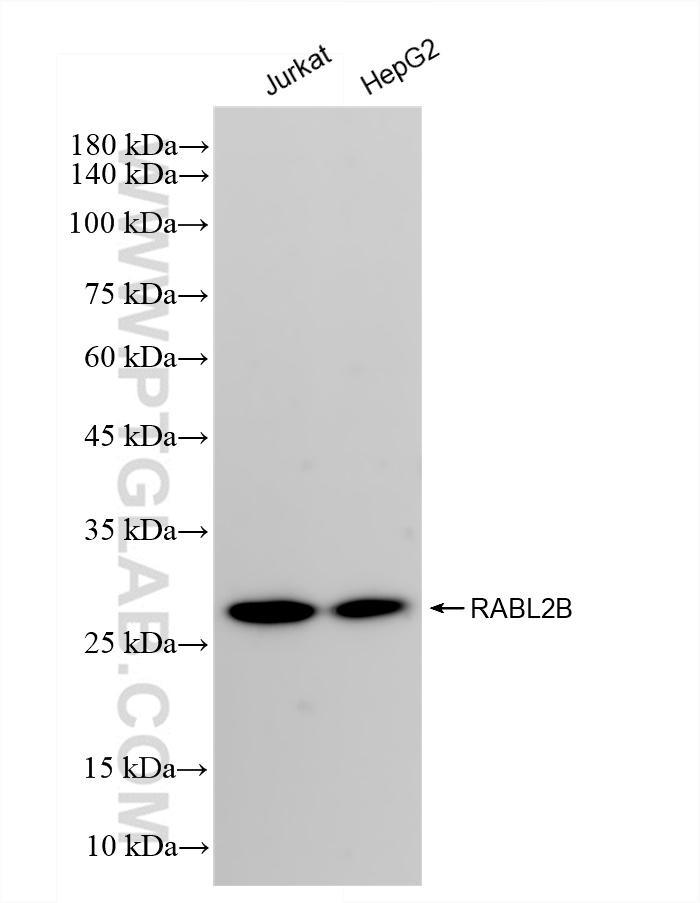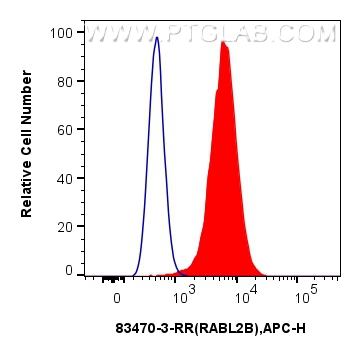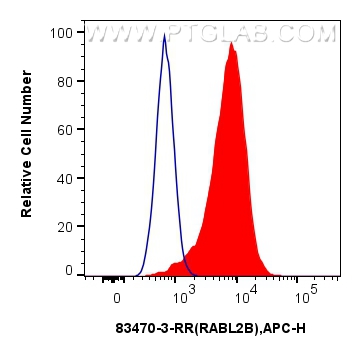验证数据展示
经过测试的应用
| Positive WB detected in | Jurkat cells, HepG2 cells |
| Positive FC (Intra) detected in | A549 cells, MCF-7 cells |
推荐稀释比
| 应用 | 推荐稀释比 |
|---|---|
| Western Blot (WB) | WB : 1:2000-1:16000 |
| Flow Cytometry (FC) (INTRA) | FC (INTRA) : 0.25 ug per 10^6 cells in a 100 µl suspension |
| It is recommended that this reagent should be titrated in each testing system to obtain optimal results. | |
| Sample-dependent, Check data in validation data gallery. | |
产品信息
83470-3-RR targets RABL2B in WB, FC (Intra), ELISA applications and shows reactivity with human samples.
| 经测试应用 | WB, FC (Intra), ELISA Application Description |
| 经测试反应性 | human |
| 免疫原 | RABL2B fusion protein Ag2189 种属同源性预测 |
| 宿主/亚型 | Rabbit / IgG |
| 抗体类别 | Recombinant |
| 产品类型 | Antibody |
| 全称 | RAB, member of RAS oncogene family-like 2B |
| 别名 | Rab-like protein 2B, Rab like protein 2B, 240501D3 |
| 计算分子量 | 229 aa, 26 kDa |
| 观测分子量 | 26 kDa |
| GenBank蛋白编号 | BC024281 |
| 基因名称 | RABL2B |
| Gene ID (NCBI) | 11158 |
| RRID | AB_3671100 |
| 偶联类型 | Unconjugated |
| 形式 | Liquid |
| 纯化方式 | Protein A purfication |
| UNIPROT ID | Q9UNT1 |
| 储存缓冲液 | PBS with 0.02% sodium azide and 50% glycerol , pH 7.3 |
| 储存条件 | Store at -20°C. Stable for one year after shipment. Aliquoting is unnecessary for -20oC storage. |
背景介绍
Rab-like protein 2B (RABL2B) is a member of a poorly characterised clade of the RAS GTPase superfamily, which plays an essential role in male fertility, sperm intraflagellar transport and tail assembly (PMID: 28553998, PMID: 28138870). A preferential expression of RABL2B in human tissues and lymphoblastoid cell lines was detected which is most pronounced in brain and placenta (PMID: 20138207).
实验方案
| Product Specific Protocols | |
|---|---|
| WB protocol for RABL2B antibody 83470-3-RR | Download protocol |
| FC protocol for RABL2B antibody 83470-3-RR | Download protocol |
| Standard Protocols | |
|---|---|
| Click here to view our Standard Protocols |



